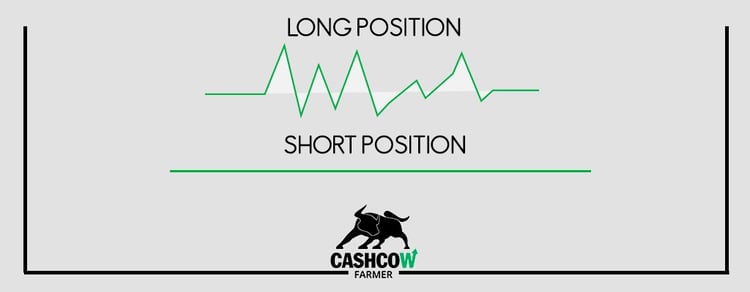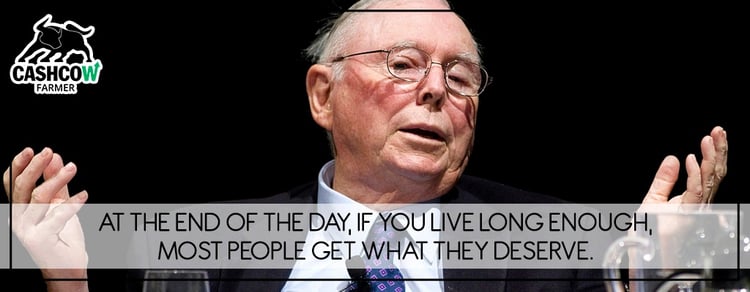Don't have time to read, click play above or subscribe to our podcast on itunes.
Every farmer needs to take advantage of futures contracts, here’s an important first question:
What are they?
Futures are derivatives of a commodity that allow buyers and sellers of that commodity to fix prices at some point in the future. The whole purpose of the futures market (for you, the farmer) is to manage price risk.
For a stock or bond, you buy and sell it whenever you want. Futures, on the other hand, have contracts that expire. That’s what makes them so complicated: every contract moves at a different rate than the next.
Still, with a little knowledge, you can use futures contracts to hedge your grain. These five nuggets will help you learn how to use futures to manage your risk.
1) The Farmer's Natural Position is Long
Every wise business choice you make must start with this foundational understanding: your natural position as a farmer is “long.”
Long, in this case, is similar to owning stock. If you think Apple stock will go up, you buy it and keep it in your portfolio. When it goes up, you make money; when it goes down, you lose money.
Farmers are in a similar position, growing a commodity this year and the next and the next. Let’s say you grow 100,000 bushels of soybeans. In general, for every dollar increase in the commodity’s value, you make $100,000 in increased revenue; for every dollar decrease, you lose $100,000.

Farming sounds a little risky when you view it in that light, doesn’t it? Don’t panic: this only underscores the importance of risk management.
2) Getting to Market Neutral
While your natural position is long, you can shorten it by getting to market neutral.
This should be your first goal, and you can do it in many ways, including options, futures, and cash sales. If you’re happy about today’s price, get to market neutral. Your revenue is locked in.
Here’s how this looks: if you’re going to grow 100,000 bushels of soybeans and you think their value will go down, you can neutralize your position and sell 20 contracts worth 5,000 bushels each. If the price goes up, you don’t make any more; if it goes down, you don’t lose.
3) Protecting the Downside
Protecting the downside is basically assuring yourself that if the market goes down, you will make money. In the futures market, that’s “selling short.” It’s complicated to explain, but essentially it’s betting that the market will go down.
First, identify if the market’s trending up or down. If you see a downward trend, consider selling short.
To sell short, borrow a contract and sell it. It doesn’t actually take place like that, but that’s technically what happens in your account. You can’t sell something you don’t own, so in order to sell short, you have to borrow the contract from your broker and sell it in the market.

Let’s say you borrowed 20 contracts, sold them short for $9, and the market went down to $8. At that point, you can buy the contracts back at $8, collect the dollar that you sold them at, and give the contracts back to your broker. You end up in the same position as before, but the market’s downward movement has actually made you a little money.
It’s definitely complicated, but it’s worth your energy. Start small, and once you’ve done a few trades, the lightbulb will go off.
4) Doubling Down
In this next suggestion, you become somewhat of a speculator in order to increase your income.
Let’s paint a picture: you’re going to grow 100,000 bushels of soybeans, and you need 20 contracts sold short to offset their price risk. All the research you’ve read indicates that soybeans are “at a bottom.” What you might do is buy more contracts, thereby eliminating your short position and getting back to your natural long position.
But you can also double down by buying more contracts. I’ll be honest: this increases your risk, but it also increases your potential for reward. At that point, you’re speculating, but if you’ve got a good track record and have done your homework, making decisions from the head rather than the heart, then you’ll be successful.
5) Which Side to Choose
Which side to choose—that is, long or short—all depends on your ability to cut your emotions cold, much like a successful day trader or speculator. You can execute trades at the worst time based on your emotions; make sure you’re cool in the heat of the moment.
This applies not only to the markets, but business in general. Stick to a well thought-out strategy instead of getting impatient and rushing your goals. Everybody wants to make a lot of money, but there’s no shortcut to that point.

As Charlie Munger said, “Step-by-step you get ahead, but not necessarily in fast spurts. But you build discipline by preparing for fast spurts. Slug it out one inch at a time day by day. At the end of the day, if you live long enough, most people get what they deserve.”
If you’re trying to be a hero in the futures market, you’ll end up with your head chopped off. But if you stick to your guns, enduring the wins and losses, you’ll eventually get ahead.
Conclusion
JP Morgan was a great man, regardless of his reputation. When asked about what would happen in the stock market the next day, he liked to cleverly reply, “It will fluctuate.”
Risk management is, in a sense, all a farmer has, because the future of the corn markets is really no different than the stock market: it will fluctuate.
You can bet on that.
For more strategies for hedging grain, here’s a great resource I recently published.
Cash Cow Farmer was created to keep you from leaving a single dollar of profit on the table. Give it a look to learn more about how Cash Cow optimizes your operation!
To learn more about the Cash Cow Farmer program, including software and consulting, give us a ring!




